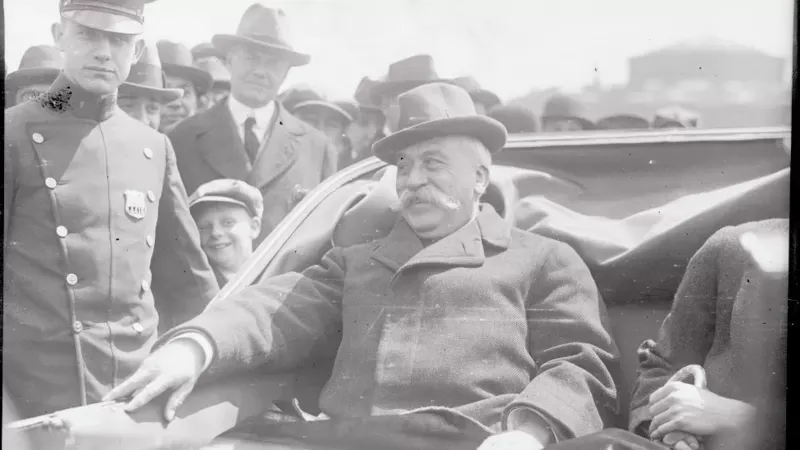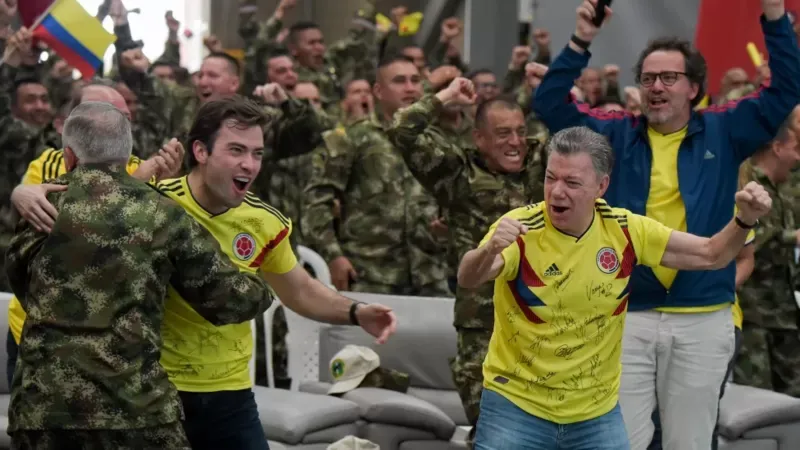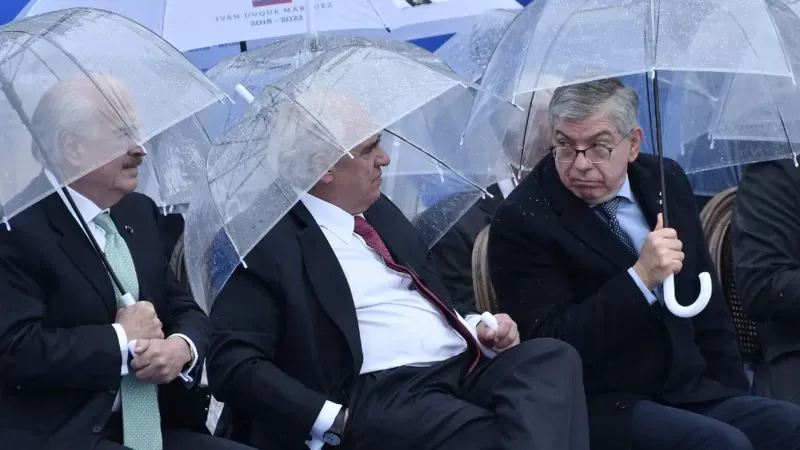The “same as always” are the star protagonists of the presidential elections of May 29 in Colombia. Those heirs of the old policy. The representatives of the establishment. The so-called “dolphins”.
“Colombia has decided that we are not going to continue as we are. We are not going to continue with the same old and the same old ones, ”she said, for example, Gustavo Petrothe favorite leftist leader in all polls, at a campaign rally last week.
LOOK: “Don’t become Putin’s altar boy”: Pope Francis’s unusual criticism of Patriarch Kirill for his support for the war in Ukraine
But it’s not just Petro: the candidates Ingrid Betancourt, Sergio Fajardo and Rodolfo Hernandez They also present themselves to the country as possible agents of a change that hopes to break with what, according to them, has been decades of clientelistic politics lacking renewal.
Although there have been exceptional cases of outsiders who came to power in Colombia, the fashionable phrase of “the same as always”, inspired by the enormous desire for change that Colombians report in the polls, has a lot of evidence.
An investigation of leftist senators reported that, as of 2018, In 200 years of history, Colombians had been governed by only 40 families..
The vast majority of them, moreover, are from the same region: of 118 presidents, 80 were born in the Andes, the mountainous framework where the wealth derived, among others, from the first great income was concentrated: coffee.
The last coastal president—that is, born on one of the country’s vast coastlines—was Rafael Núñez, in 1886. Petro hopes to emulate him.
But not only the presidents come from the same Andean and enlightened lineage: in the media and companies delfinazgo extends its influence.
A study by the economist Adolfo Meisel reports that between 1974 and 1996, 65% of the technocrats who managed the economy were from Bogota or Antioquia. Only 5% were coastal. And 42% were from the same private university, the prestigious University of the Andeslocated in the center of Bogotá, the capital.
One of the “same as always” is, for example, former President Juan Manuel Santos: Bogotano educated abroad, great-nephew of a former president, heir to the most important newspaper (El Tiempo), young intern in the coffee industry and politician and editorialist without great ideological attachments who moved around the establishment for decades until he came to power .
A dolphin whose children, today members of the national show business, already sound like presidential candidates in the circles of political futurology.
The same, in history
The renowned historian Jorge Orlando Melo explains that, once independence was achieved, in 1819, the country’s first ruling elite was made up of educated men, most of whom were lawyers.
“In a diverse country, with economic elites in each region, the lawyers, and especially those who wrote in the newspapers, were the ones to generate consensus and facilitate governance,” he says.
For this reason, in the 19th and early 20th centuries, presidents are more journalists than landowners, he says. And that is when the surnames that continue to dominate politics begin to emerge: Lleras, Santos, Gómez, Ospina.
“The country is run by an alliance of people with money and powerbut that defines its rules by the action of lawyers and politicians and lawyers, until 1960, when technocrats, closer to the unions, began to take on that role, replacing the power of journalists, ”says Melo.

In the midst of an outbreak of violence, in 1958 the Liberal and Conservative parties signed a pact to rotate power every four years. The so-called National Front generated political and economic stability.
The violence subsided, but only for a time. Any movement that was not part of these two traditional parties, very close in their economic vision of the country, was excluded. Guerrillas soon emerged.
“The strict power-sharing agreement explicitly excluded all other political movements. Given that the two colluding parties were factions of the country’s economic elites with diffuse ideological differences, the groups that stood out as the most affected by political exclusion were those ideologically aligned with the left,” reads an essay by economist Leopoldo Fergusson .
In the 1960s and 1970s, six guerrillas emerged in Colombia. All sought to overthrow what for their leaders was the “perfect dictatorship” of bipartisanship. None made it.
And although the National Front ended in 1974, and in 1991 a progressive Constitution was signed that created space for other parties and recognized the political and cultural diversity of the country, in practice many believe that the government of “the same” remained in force until today.
This even with the emergence of a member of the rural elite outside the bipartisanship: Alvaro Uribewho governed between 2002 and 2010 with the support of urban elites thanks to his remarkable popularity in the midst of the “war on terror”, against the guerrillas.
Juan Manuel Santos first (although he clearly distanced himself from him in the presidency) and Ivan Duke later it was the dolphins of Uribe and of that elite that the presidents also represented further back in time Andres Pastrana and Ernesto Samperamong others.

Concentration of power and sociocultural capital
As a politician and thinker, Cecilia López Montaño, a coastal woman close to turning 80, has insisted that the absence of political renewal is what has prevented us from leaving the war. She did it in politics — “where they took me out”, she says — and today she does it in the media.
“The enormous inequality that we have in wealth, in access to land or employment, we also have in politics,” he says.
“The elites concentrate a lot of economic power and have been very adept at maintaining their privileges despite countless attempts, such as the 1991 Constitution, to decentralize the country.”
Actually, he concludes, “The only thing that was decentralized was corruption and drug trafficking”.

“The peculiarity of Colombia is that these old castes continue to dominate politics,” says historian Daniel García-Peña, “because these logics exist throughout Latin America, but in no country have they remained so intact until todayin part because Colombia is the only country in the region that has not had a purely progressive government”.
The economist Fergusson explains that inequalities in Colombia are so deep-rooted that they tend to exacerbate themselves and hinder the State’s efforts, at certain times, to redistribute wealth.
“In Colombia there is no multi-class public education and that prevents class differences from being erased, on the one hand, but also helps the emergence of social, cultural and symbolic capitals that mean that those who go to private schools have, no matter how competent they are, almost exclusive access to the political system and to the economic system”, explains the professor from the Universidad de los Andes.
Cultural capital was for years what defined political capital in Colombia.
Petro, unlike previous leaders, is a former guerrilla who experienced poverty and was educated at public universities. He can be that the cultural capital of it. One with whom, after so much time, he aspires to dethrone “the usual ones”.
Source: Elcomercio

:quality(75)/cloudfront-us-east-1.images.arcpublishing.com/elcomercio/U3RIZQGU2ZF3DD44BAFAA3ZFA4.webp)

:quality(75)/cloudfront-us-east-1.images.arcpublishing.com/elcomercio/63WIYQW7QNFG7DOETU7QNDDMQI.jpg)
:quality(75)/cloudfront-us-east-1.images.arcpublishing.com/elcomercio/4FNJ6KIZQNAW7P3CMD6HC2GUUI.png)
:quality(75)/cloudfront-us-east-1.images.arcpublishing.com/elcomercio/3BUVSGVV65HBFMVPWYRZS52PMM.jpg)
:quality(75)/cloudfront-us-east-1.images.arcpublishing.com/elcomercio/7V2Q6F3HZ5CHVLDO2LFINKUWCI.jpg)
